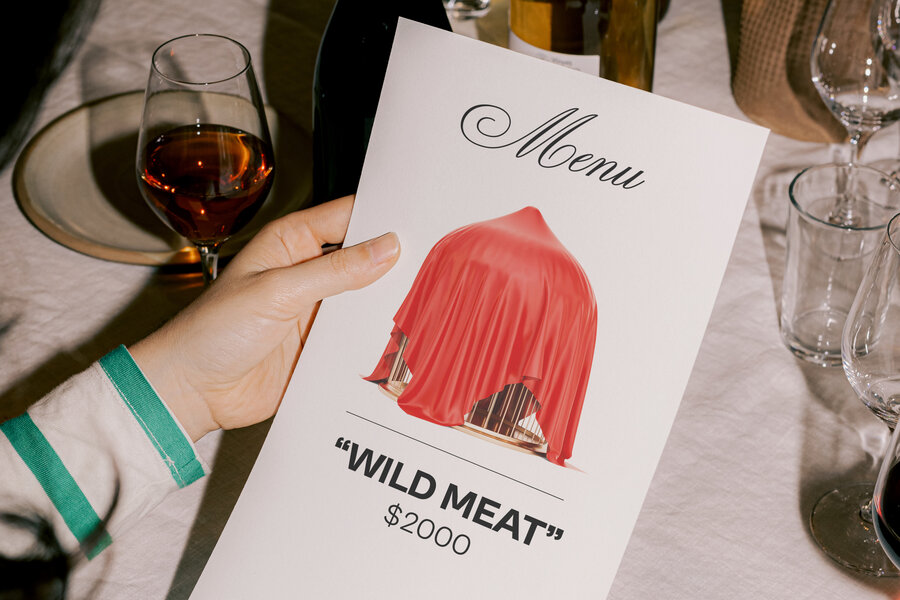Travel
Please Stop Pretending You’re on an Episode of ‘Bizarre Foods’

The smell of fermented seal hung heavy in the air as our tour guide led us to a makeshift outdoor market, hidden among the LEGO-colored houses of Greenland’s capital. Iginneq (seal fat conserved in its own oil) and mattak (whale skin and blubber) littered the vendors’ wooden tables. But I held back from snatching up the rubbery cubes alongside my fellow travelers.
As a travel journalist, I’m frequently offered the chance to try foods that your average American might label “exotic,” from fried cod tongue in Denmark to roasted guinea pig in Peru. And I firmly believe that trying new recipes outside our comfort zone can be a great way to better understand and connect with different cultures. But there’s a certain type of traveler who—in some sort of Andrew Zimmern cosplay—seeks out adventurous foods purely for clout, shock value, and a more provocative Instagram grid.
I’ve met my share of them on the road—and on social media. Did you see me eat that? Subscribe to my TikTok! At best, this trend is a little cringe. But, as I know from personal experience, it can take on a darker side, too. Once while in Iceland, my tour group wanted to taste hákarl, the iconic national dish, that happens to be made from Greenland shark vulnerable to overfishing. And then there was an incident in Xi’an, when I spotted tourists at the wet market haggling over a critically endangered Chinese giant salamander—a living fossil that can sell for more than $1,500 a piece to so-called gourmands. For some, a menu alone dictates what should and should not be eaten. Even a recent press trip to Greenland with a supposedly eco-friendly, small ship cruise line featured a meal of narwhal, which is currently under strict hunting quotas as their population rapidly drops.
Many of the passengers who presumably came to see these real-life unicorns breach gracefully along glacial inlets quickly settled for pictures of their flesh on a plate. I politely declined.
The reality is that plenty of otherwise reputable establishments openly serve threatened animals, including pangolin (the world’s most trafficked mammal) and tiger. Sometimes the protein will be vaguely labeled, such as in Grenada, where endangered leatherback and green sea turtles occasionally appear on menus as “wild meat” so tourists are unaware of what they are eating.
Some travelers try to justify their choices with a “when in Rome” attitude. But in many cases, locals in other countries have backed away from consuming foods that are still being ordered by tourists. For instance, whale meat has plummeted in popularity in Norway, Japan, and Iceland—the three countries that continue commercial whaling despite the International Whaling Commission’s 1986 moratorium—to the point that only 2% of the local population still partakes. Tourists are by far the biggest consumers of whale in Iceland today, which means they are helping to prop up an industry that might otherwise no longer exist.
“To try to generate a market, restaurants and operators pitch whale as a traditional dish to tourists,” says Danny Groves, head of communications at the Whale and Dolphin Conservation. In the case of Japan, the historic importance of whaling is greatly exaggerated by the government itself. While certain coastal communities have hunted whales for centuries, the practice didn’t start on a national scale until after WWII, when the impoverished, postwar nation turned to whales as a cheap source of protein (urged by US General Douglas MacArthur, head of the US occupation of Japan, no less).
At this point you are probably asking, “Wait, how is this all legal if these animals are threatened?”
First, a bit of background: The International Union for Conservation of Nature (IUCN) maintains the most comprehensive list of endangered species, while the Convention on International Trade in Endangered Species of Wild Fauna and Flora (CITES) regulates international trade of certain species listed to ensure their survival in the wild. Think of these institutions like the United Nations for the natural world. So while their guidelines are helpful, they aren’t bulletproof. Members ultimately have the final say over what happens within their own borders. Depending on the country, local laws can be more or less strict or might not exist at all, says Diogo Verissimo, Chair of the IUCN Behaviour Change Science Taskforce.
This all means that even if an animal is listed as endangered by CITES, you may be able to eat it depending on where you’re traveling—you just can’t take it over a border.
Many conservationists also warn that regulations and laws aren’t always up-to-date with what’s happening in the field. Take, for example, the ortolan bunting bird, which the IUCN ranks as a matter of Least Concern globally, despite scientific evidence
that it’s being eaten into extinction across Europe.
“Illegal and unsustainable are not always the same thing,” says Verissimo. “There are instances where hunting a threatened species may be legal because, when the law was created, that species was doing fine, but now it’s not. Or maybe a species is threatened globally, but quite abundant in a particular area. It’s definitely a complex topic.”
Then there’s the matter of enforcing laws—a Sisyphean task that becomes exponentially more difficult when protecting migratory marine life.
“Fish move,” says Jack Clarke, a sustainable seafood expert at the Marine Conservation Society. “It’s hard enough to monitor species between the borders of one or two countries, but a lot of animals are fully pantropical and cover the entire ocean.” He notes that the UN is trying to come up with a high seas treaty, but at the moment many of the animals that most need our help—such as whale sharks and bluefin tuna—transit through waters that are beyond the protection of any nation’s laws. In no man’s land, it’s easy for unregulated fishing to occur. While there’s been significant progress in fish management in recent years, most experts agree that all three species of bluefin tuna—Atlantic, Pacific, and Southern—continue to be overfished. Yet it’s still openly served in sushi bars throughout the United States with the blessing of NOAA Fisheries, the notoriously questionable federal fisheries management.
What can you do to make sure you’re not eating a vulnerable animal? The first step is to know what you’re ordering. Not only does this erase ambiguity with catchall terms like wild meat or flake (which can be a threatened shark species), it shows tourism operators and restaurants that travelers care about conservation. “That’s an important step and can drive change,” says Verissimo. “It’s also about pressuring governments to have rules in place that make sustainable practices more easy and more likely.” He suggests expressing your (polite) disappointment if you find someone serving an at-risk species.
Next, do your homework. Start by referencing the Marine Conservation Society’s Good Fish Guide, Monterey Bay Aquarium’s Seafood Watch, and the CITES Appendices of endangered species. Just keep in mind that the answer might require further digging—vulnerable animals aren’t always what you might expect.
Smoky, sweet, and umami-rich—the eel with black sesame seed purée at David Toutain, a two-star Michelin restaurant in Paris, was once among my favorite dishes. But on my last trip to the city, I noticed the chef’s signature recipe was missing from the menu. As it turns out, the smuggling market for the critically endangered European eel is worth up to €3 billion a year.
“If there was a butcher in London with Amur leopard on the specials board, there would be a public outcry,” says Clarke. “Yet European eels, which are more endangered than pandas, are served in Michelin-starred restaurants all over the world.”
Thankfully, sustainability-minded chefs like Toutain are independently starting to take a stand against what’s now known as “Europe’s ivory trade” and remove eel from their menu. But not every restaurant is so conscientious. For me, it was a harsh reminder that eating an endangered animal can happen as easily on a white table cloth as it can in a wet market, and that ultimately a traveler’s responsibility to know where their food comes from.









